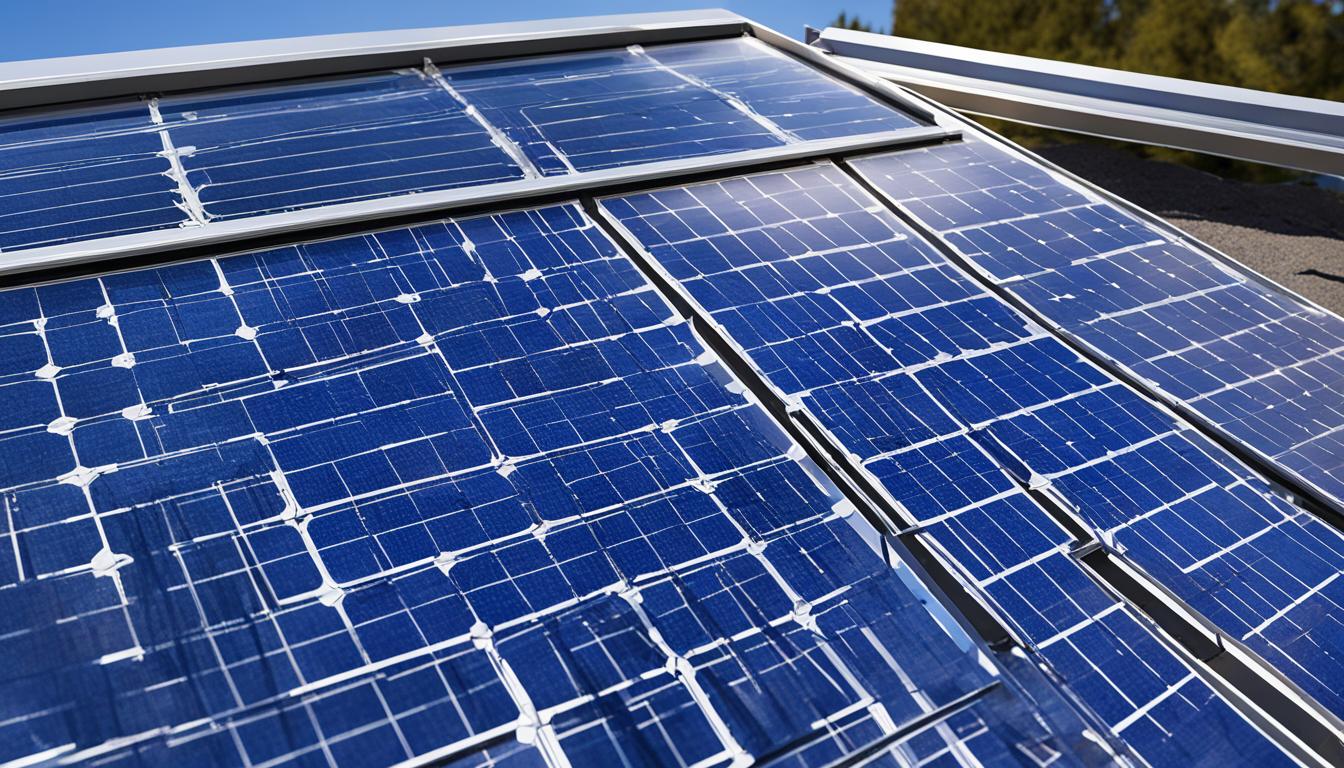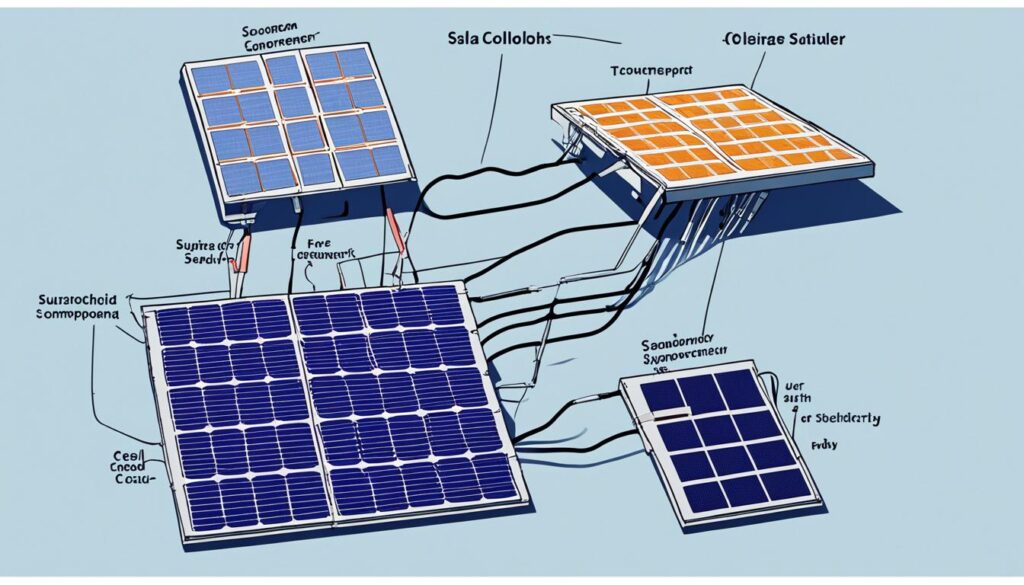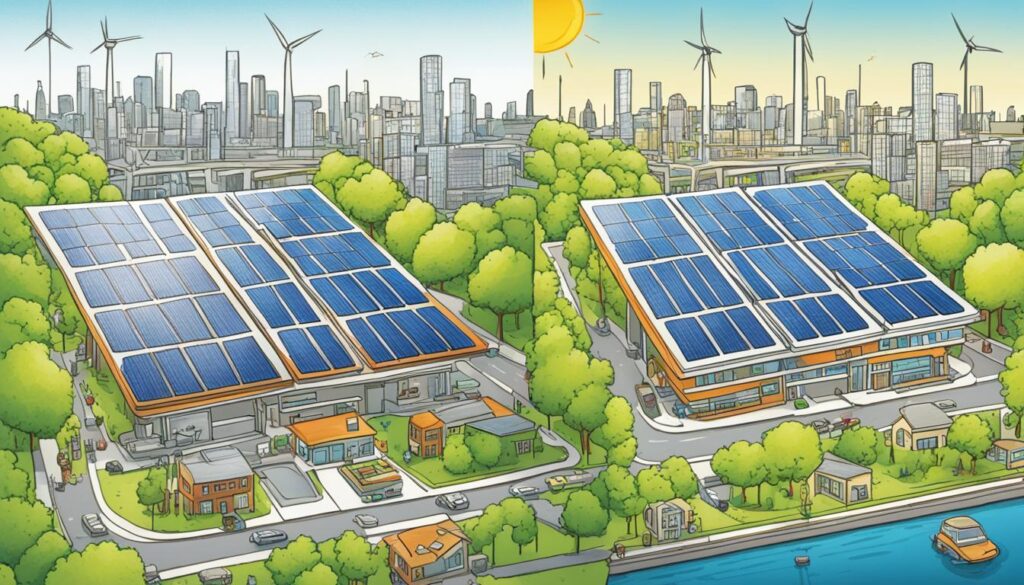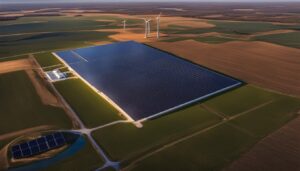
A solar panel is a fundamental component of a solar energy system. Its structure and function play a vital role in harnessing the power of the sun to produce clean and sustainable electricity.
The primary function of a solar panel is to convert sunlight into electricity through the photovoltaic effect. This process relies on the interaction between the solar cells within the panel and the incoming sunlight. The solar cells, typically made of silicon, absorb the sunlight and generate direct current (DC) electricity.
The structure of a solar panel is designed to withstand various weather conditions, ensuring its durability and efficiency. It consists of several key components, including:
- Solar cells: These are the heart of the solar panel. They absorb sunlight and convert it into electricity through the photovoltaic effect.
- Protective cover: Usually made of tempered glass, it shields the solar cells from external elements and enhances their longevity.
- Frame: Provides structural support and secures the solar panel in place.
- Electrical connections: Wires and connectors that enable the flow of electricity from the solar panel to the rest of the solar energy system.
The environmental impact of solar panels is profound. By harnessing the sun’s energy, solar panels reduce our reliance on fossil fuels, decrease carbon emissions, and contribute to a cleaner and more sustainable future. With their impressive structure, reliable function, and positive impact, solar panels are paving the way for a greener planet.
Key Takeaways:
- Solar panels convert sunlight into electricity through the photovoltaic effect.
- The key components of a solar panel include solar cells, a protective cover, a frame, and electrical connections.
- Solar panels have a significant environmental impact by reducing reliance on fossil fuels and decreasing carbon emissions.
- The structure of a solar panel is designed to withstand various weather conditions and ensure durability.
- Embracing solar technology can lead to a cleaner and more sustainable future.
Solar Panel Components and Their Functions
Solar panels are composed of several components, each serving a specific function. Understanding these components is key to comprehending how solar panels convert sunlight into electricity.
Solar Cells
Solar cells, also known as photovoltaic cells, are the heart of a solar panel. These cells capture sunlight and generate electric current through the photovoltaic effect. Made primarily of silicon, solar cells leverage the properties of this semiconductor material to convert solar energy into usable electricity. The more solar cells a panel contains, the higher its potential power output.
Protective Cover
The protective cover of a solar panel serves two critical functions. Firstly, it shields the solar cells from external factors such as dust, rain, and snow. Typically made of tempered glass, this cover is designed to be transparent and durable, allowing sunlight to pass through while protecting the delicate solar cells underneath. Secondly, it ensures the longevity of the solar panel by safeguarding it against potential damage from weather conditions and other environmental elements.
Frame
The frame provides structural support and protection for the components of a solar panel. Typically constructed with aluminum or steel, the frame not only holds the solar cells and protective cover in place but also ensures their stability and durability. This sturdy structure allows the solar panel to withstand various weather conditions and maintain its performance over its lifespan.
Electrical Connections
Electrical connections are essential for the flow of electricity from the solar panel to other components of a solar energy system. These connections consist of wires and connectors that link the solar cells together and enable the transfer of electrical current. The electricity generated by the solar panel is then directed to other system components, such as inverters and batteries, for further use or storage.
Each component of a solar panel plays a crucial role in its overall performance and efficiency. The solar cells capture sunlight and convert it into electricity, the protective cover shields the cells from external factors, the frame provides support and protection, and the electrical connections enable the flow of electricity to other system components.

The Environmental Impact of Solar Panels
Solar panels have a significant environmental impact, making them an attractive choice for renewable energy generation. By harnessing the power of the sun, solar panels help reduce the reliance on fossil fuels and decrease carbon emissions. The production of renewable energy through solar panels does not produce greenhouse gas emissions, contributing to the mitigation of climate change.
Solar panels also have a minimal impact on water resources compared to conventional power generation methods, as they do not require large amounts of water for operation. Additionally, the use of solar energy helps to preserve natural resources and reduce pollution associated with the extraction and transportation of fossil fuels.
The adoption of solar panels across residential, commercial, and industrial sectors can contribute to a cleaner and more sustainable future.

| Advantages | Description |
|---|---|
| Reduced reliance on fossil fuels | Solar panels generate electricity without burning fossil fuels, helping to decrease the consumption of non-renewable resources. |
| Lower carbon emissions | As solar panels do not produce greenhouse gases during operation, they contribute to the reduction of carbon emissions and the mitigation of climate change. |
| Water resource conservation | Solar panels require minimal water for operation compared to conventional power generation methods, reducing the strain on water resources. |
| Preservation of natural resources | By using solar energy, the extraction and transportation of fossil fuels can be reduced, helping to preserve natural resources and minimize environmental degradation. |
Conclusion
Solar panels are essential components of solar energy systems, playing a pivotal role in converting sunlight into electricity through the efficient use of photovoltaic technology. These panels consist of various components, such as solar cells, a protective cover, a frame, and electrical connections, each serving a specific function in the process. By harnessing the power of the sun, solar panels offer a sustainable solution for meeting energy demands while minimizing the environmental impact.
One of the key advantages of solar panels is their significant environmental impact. By reducing reliance on fossil fuels and decreasing carbon emissions, these panels contribute to the transition towards cleaner and greener energy generation. They help mitigate climate change by producing renewable energy without emitting greenhouse gases, thereby fostering a more sustainable future.
Furthermore, solar panels have a minimal impact on water resources compared to traditional power generation methods. Unlike coal-fired power plants or nuclear reactors, which require significant amounts of water for cooling and other operations, solar panels operate without water consumption. This characteristic not only conserves water but also helps preserve precious water resources for other essential purposes.
Embracing solar technology and integrating solar panels into our energy systems not only benefits individuals, but also communities, industries, and the planet at large. By utilizing solar energy, we can reduce pollution associated with the extraction and transportation of fossil fuels, protect natural resources, and create a sustainable, cleaner future for future generations. With ongoing advancements in solar panel technology, the efficiency and accessibility of solar power continue to improve, making it an increasingly viable and cost-effective energy solution.
FAQ
What is a solar panel?
A solar panel is an essential component of a solar energy system that converts sunlight into electricity through the photovoltaic effect.
What are the main components of a solar panel?
The main components of a solar panel include solar cells, a protective cover, a frame, and electrical connections.
How do solar cells work?
Solar cells, usually made of silicon, absorb sunlight and generate DC (direct current) electricity through the photovoltaic effect.
What is the function of the protective cover?
The protective cover, often made of tempered glass, shields the solar cells from external elements and enhances the durability of the solar panel.
What is the purpose of the frame?
The frame provides structural support and helps to secure the solar panel in place.
What do the electrical connections do?
The electrical connections, including wires and connectors, enable the flow of electricity from the solar panel to the rest of the solar energy system.
What is the environmental impact of solar panels?
Solar panels have a significant environmental impact as they reduce the reliance on fossil fuels, decrease carbon emissions, and contribute to the transition towards renewable energy sources.








